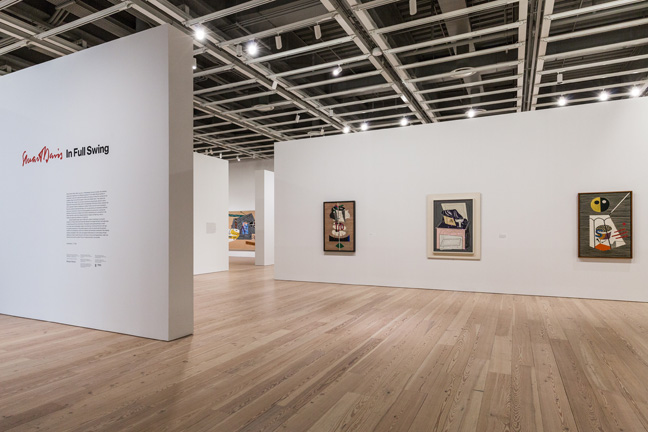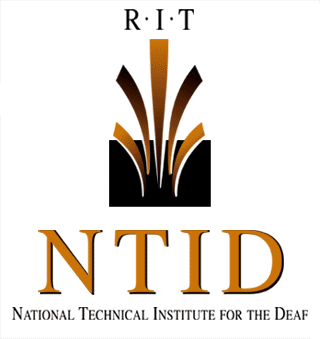It has been almost a week since I have got back from America
and I still don't think I have got over it. England is so English. America is
so big, proud and brash and us Brits sit here modestly sipping our tea whilst
the land of hope and glory crumbles round our ears. This trip, I know, will
stay with me for the rest of my life. In some ways, it has been a turning point
for me, a small sail of resolution in a shifting sea of uncertainty. Before
America, I would pick up a book that read: ASL or American Deaf Community and
go 'Bah! I don't need to know about America!' but as it turns out, I do.
America has a lot to teach the world and a lot it can teach Britain. We have
experienced some incredible things, learnt some fantastic and sometimes
shocking information, seen art in sign language, seen tour interpreted, met
with some fantastic organisations and met signer after signer, whose language I
could watch forever, if my brain would let me.
American TV does not have captions or if it does, you need a
special TV but the rest of the access is better than I have seen anywhere in England.
Places actually have interpreters which are both available and good! Take the
9/11 Museum, I emailed them, they brought in a interpreter. Simple. In England,
a few museums have a signer on a TV screen but only in places with a large Deaf
community. That's about all the access you get. I was sad to see no interpreted
performances after Spring Awakening closed in New York but various places had
signed performances upcoming. Disney was another world of interpreting that I
will never forget, the access to the performances and the standard of
interpreting was another level to behold. Seeing an event like ArtSigns was
lovely to see and interesting to attend and all round good eyeball burning fun.
Apart from the price.
The American deaf community are as much of a varied bunch as
the USA is itself and more accepting than Britain. I have only been acquainted
with deaf people for about two years which is no experience at all really but I
feel like the deaf people in America are a lot more accepting and open. I would
be drawn into conversation with complete strangers, given tips on how best to
see the county, people would ask about BSL and try and finger spell the BSL
alphabet, they would ask about me, where I learnt to sign and why. They would
openly accept questions and go into detail and talk about themselves and the
experiences they have had as deaf people. I found the students were the same,
both us and them relishing in the shared experience of being hearing in a deaf
world and remaining in a grey area, on the edge of the Deaf community. They
were open and eager and accepting and I have never really known strangers to be
so accepting and kind and when I say this, I am talking about hearing and deaf.
In England, I have met very few deaf people similar, those who I am acquainted
with sticking to their close knit groups of familiar faces
The language itself is beautiful and intricate and like BSL,
ever evolving. It is so pure and unashamed of itself, ASL is truly DEAF with
little influence from the English world, proud and loud and wanting the world
to know that it is not going to apologise for being what it is and it is not
going to be shoved under the carpet for another hundred years. Now to me, BSL seems
a little diluted, a watered down language, reflecting the prim and proper ways
of the English language and trying to become less of itself to cater for the
masses that do not understand. Saying this as a hearing person, I think BSL
would be a lot easier to acquire than ASL, BSL is influenced a lot more by the
English language making it easier for those with English as their first
language to pick up the strings of signs and convert them into their own
language.
On this trip, I have learnt not to translate the signs into
English words in my head: it does not work that way. As I should have learnt a
long time ago, it is about the meaning of the signs and how the signs create
meaning. not how the signs translate word for word into English. ASL relies heavily
on fingers spelling, which is why I am glad I learnt the alphabet before I set
off. Words are spelt if they do not have an iconic or arbitrary equivalent at a
fast rate of knots, fingers flipping in and out and knuckles shifting but a lot
of the signs rely on the first letter of the word to create meaning. For
example, the comparison of my name sign in ASL and BSL came up. My name sign is
'flower' in BSL for obvious reasons with an F hand shape of the index finger
and thumb pinched together, reflecting the motion of a person picking up a stem
of a flower and smelling it under their nose. in ASL it is the same placement
and movement but with the 'R' hand shape, showing the reliance ASL has on the
sign incorporating the first letter of the word. This is the same for 'ready',
with one or two hands flipping 'R' outwards and for elevator with an E
descending the other palm and the same for emergency.... I could go on. Name signs also incorporate this, a
distinctive feature of trait of a person is recognised and then the first
letter of their name is incorporated. I now sense the importance of opening you
mind to other languages and I have a hungry wish to learn more ASL, of its
grammar and how it is structured (going to be hard in England) and more of the
worlds sign languages in their vast variety.
I still cannot believe that we stayed in Gallaudet. The
giant piece of deaf history that I have read about in every book on the topic
of deafness, I have seen it referenced in films and online videos. Ever since I
heard about it, described with such enthusiasm by my lecturers, I thought it a
far off pipe dream that I would set foot in the grounds, let alone stay there
for two weeks. I got to go inside Ole Jim, the powerhouse of the 88' Deaf President now campaign! It was a dream. I am planning on going
back, even if I have to take out another student loan just for this purpose.
Seeing the language used in the smallest aspects of the running of the university
was astonishing and something I was completely unaccustomed to. Seeing a place with
flashing doorbells, deaf space, clear sight lines, campus police call buttons
and the largest array of deaf and sign language themed books is un-explainable.
The surrounding area was also astonishing, people familiar with the Deaf community
and sign language, picking up signing and finger spelling without the usual
fuss of the gawping mouths, looks of confusion and scramblings for pen and
paper. NTID, although our visit was short, gave the same impression: one of
equality and acceptance. There should be more universities like Gallaudet and
NTID, there should be more communities that treat signing as a average,
everyday thing and not like a alien language from mars. Honestly, England
cannot hold a candle.
So this is the last post of the Deaf Studies Trip to America blog. I hope you have enjoyed reading a smuch as I have enjoyed writing. I will never forget the many breath taking and mind boggling experiences I had in America.









